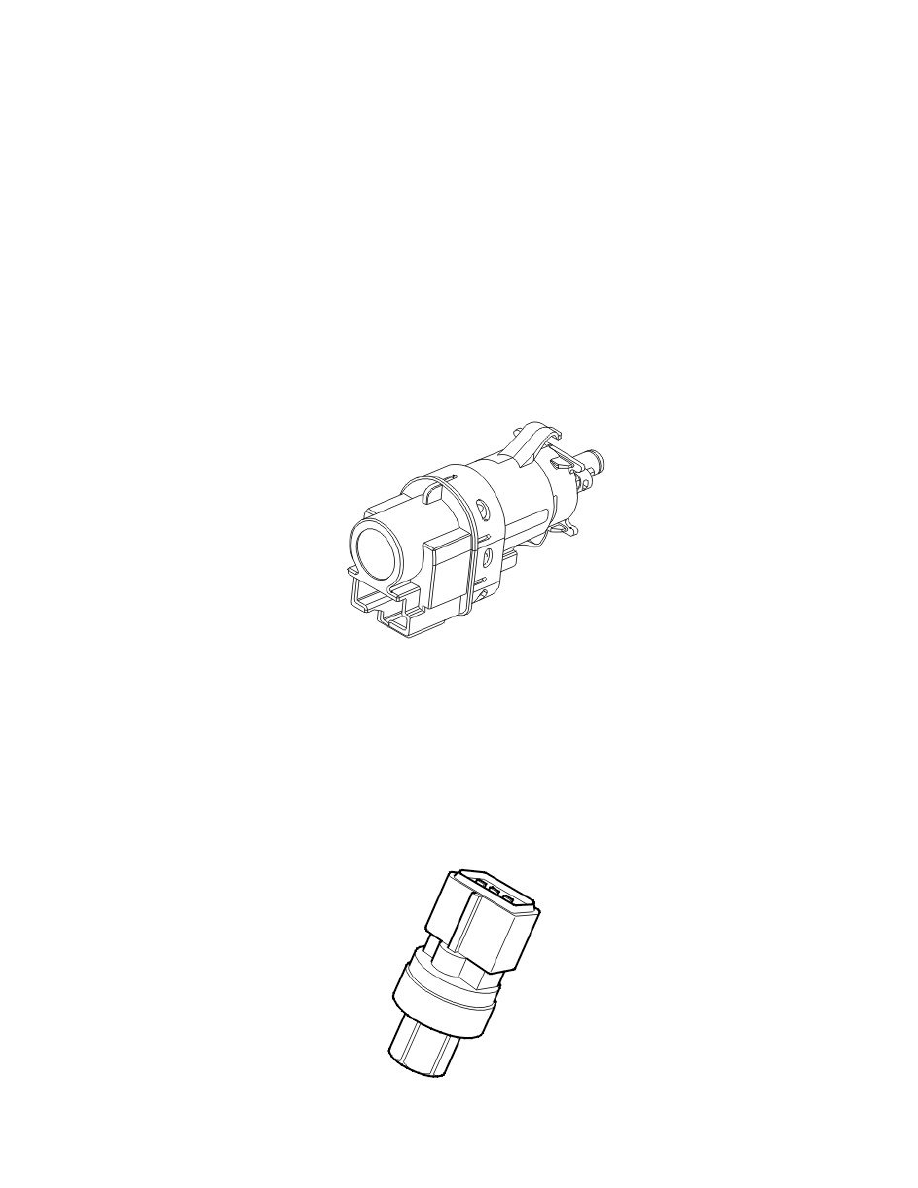XC70 AWD L6-3.2L VIN 98 B6324S (2009)

front heated oxygen sensor (HO2S).
There are two rear heated oxygen sensors; one for bank 1 and one for bank 2.
The heated oxygen sensors (HO2S) can be diagnosed by the engine control module (ECM), and signals from them can be read off
Preheating of the heated oxygen sensors (HO2S)
The heated oxygen sensor (HO2S) only functions above a certain temperature, approximately 300 °C. The normal operating temperature is between
300-900 °C. The heated oxygen sensors (HO2S) are electrically pre-heated so that operating temperature is rapidly reached. They are also pre-heated to
ensure that the heated oxygen sensors (HO2S) maintain a normal operating temperature and to prevent condensation which could damage the heated
oxygen sensor (HO2S).
The sensor's heating coil consists of a PTC-resistor. The heating coil is supplied with voltage from the system relay and is grounded internally in the
Engine control module (ECM).
When the control module grounds the connection, a current will pass through the PTC-resistor. When the heated oxygen sensor is cold, the resistance in
the PTC-resistor is low and a high current will pass through the circuit. To avoid condensation damage to the heated oxygen sensor the current is pulsed
from the Engine control module (ECM) in the beginning. Depending on the temperature, consideration is given to dew point and, as the temperature
increases in the PTC-resistor, the resistance increases in the resistor, the current is reduced and transfers gradually to non-pulsing current.
The heating period for the front heated oxygen sensor is short, approx. 20 seconds.
The heater element heats the heated oxygen sensors (HO2S) to approximately 350 °C. The probes maintain this as a minimum temperature.
The engine control module (ECM) can diagnose the heater element.
Stop lamp switch
The task of the stop lamp switch is to provide the engine control module (ECM) with information about the position of the brake pedal.
When the brake pedal is pressed down, a signal is sent to the Engine control module (ECM) which turns off the cruise control (if it is activated). The
brake pedal switch function (connected to the brake control module (BCM)) also handles the function for switching off the cruise control.
For further information, see Design and Function, Brake control module (BCM).
The stop lamp switch is supplied with power from the start control module (SCU) (terminal 30). When the brake pedal is depressed the switch closes and
a high signal (12 V) is transmitted to the engine control module (ECM).
The engine control module (ECM) can diagnose the stop lamp switch. The status (position) of the switch can be read using the diagnostic tool.
The brake light switch is on the pedal box by the brake pedal.
A/C pressure sensor
The air conditioning (A/C) pressure sensor detects the pressure in the high-pressure side of the air conditioning (A/C) system. See also: Function See:
